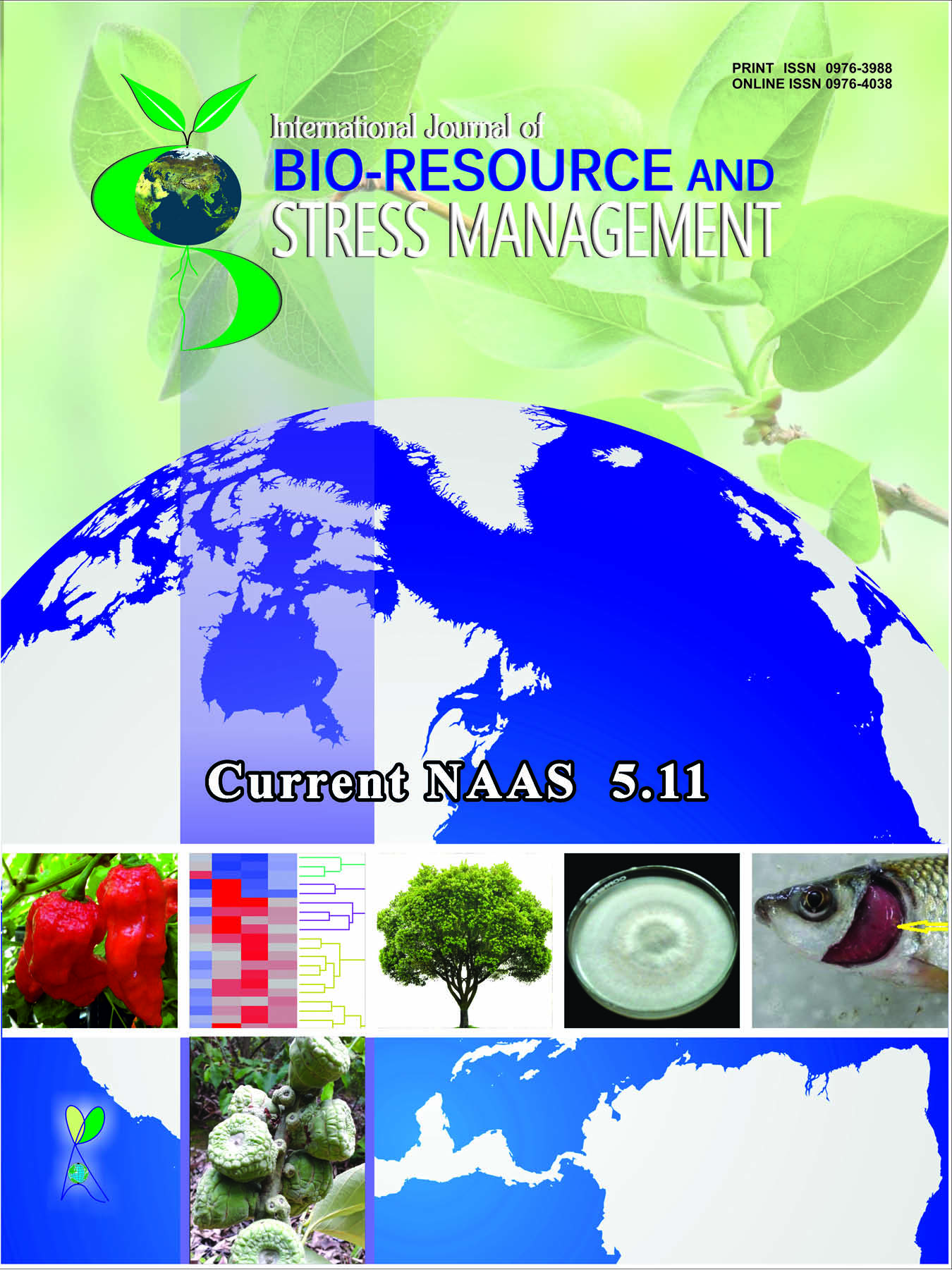A Technique to Measure the Loss in Tea Crop by the Defoliating Pest (Hyposidra talaca Walker) on the Basis of Dry Mass and Leaf Area Parameters
Keywords:
Tea, defoliating pest, Hyposidra talaca, leaf-area, crop lossAbstract
Tea (Camellia sinensis) is known as the queen of all beverages. India is the second largest producer of tea in the world, but the crop is largely damaged by the defoliating pest, Hyposidra talaca Walker (Geometridae: Lepidoptera) in the Darjeeling foothills and plains. A study conducted under laboratory conditions on its biology and food consumption shows that 4th and 5th instars of this looper caterpillar are the most destructive as they feed both on young (pluckable) and maintenance tea leaves. On an average, 25.1±1.9 (%) of 4th instar and 19.7±2.6 (%) of 5th instar caterpillars will survive from the eggs laid by a single moth. A 4th instar looper caterpillar can eat 3.55±0.31 (cm2) of the leaf area and 0.021±0.002 (g) of weight of tea leaves in terms of dry mass in 24 hrs. Whereas, a 5th instar caterpillar can eat 16.19±1.21 (cm2) the leaf area and 0.084±0.007 (g) of weight of tea leaves in terms of dry mass in 24 hrs. A female moth of looper (H. talaca), collected from the tea plantations, lays on an average of 500 eggs. Therefore, it may be interpreted that the surviving individuals of 4th and 5th instars will cause an overall loss of 12,690.33 cm2 of the leaf area (both pluck-able and maintenance leaves) therefore losing a part of photosynthate content of both pluckable leaf and maintenance leaf and a loss of 66.67 g dry mass of the leaves. Besides direct loss from feeding, excess defoliation may cause a loss of the photosynthesizing leaf-area; hence reduce the bush growth and its productivity in long term.
Downloads
Downloads
Published
How to Cite
Issue
Section
License
Authors retain copyright. Articles published are made available as open access articles, distributed under the terms of the Creative Commons Attribution-NonCommercial-ShareAlike 4.0 International License, which permits unrestricted non-commercial use, distribution, and reproduction in any medium, provided the original author and source are credited. 
This journal permits and encourages authors to share their submitted versions (preprints), accepted versions (postprints) and/or published versions (publisher versions) freely under the CC BY-NC-SA 4.0 license while providing bibliographic details that credit, if applicable.





